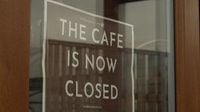UK households are facing yet another blow to their budgets as food inflation, particularly for chocolate and other staples, continues to climb—outpacing both general inflation and wage growth. According to the Office for National Statistics (ONS), overall consumer price inflation held steady at 3.8% in August 2025, matching July’s figure. However, beneath this headline number, the cost of food and non-alcoholic drinks surged by 5.1%, up from 4.9% the previous month, marking the fifth consecutive monthly rise and the highest rate since January 2024.
This acceleration in food prices is hitting consumers hard, with everyday items such as beef, butter, chocolate, and coffee seeing especially sharp increases. The ONS noted that chocolate prices alone soared by 15.4% in the year to August, a staggering jump that’s being felt in everything from supermarket aisles to high-street cafés. “The inflation picture is increasingly ugly here in the UK and, sadly, things may get worse before they get better,” warned Zara Nokes, a global market analyst at J.P. Morgan Asset Management, as quoted by Citywire. She added that the rise in food inflation is of particular concern, as household inflation expectations are already on the rise, and there’s a real risk these could worsen if food prices spike further.
Driving these increases are a complex mix of factors. According to Dr. Kris Hamer, director of insight at the British Retail Consortium (BRC), “Food inflation climbed above 5% in August for the first time in 18 months as rising employment costs and poor harvests drove up retailers’ costs.” The BRC points to a £7 billion surge in costs for retailers in 2025, attributed to increased National Insurance contributions, a higher National Living Wage, and a new packaging tax. These costs, retailers say, are impossible to absorb fully, and inevitably get passed on to shoppers.
For chocolate lovers, the news is especially bitter. The price of cocoa—the key ingredient in chocolate—has more than doubled over the past two years, peaking at over $12,000 per tonne at the end of 2024 before settling around $7,800 per tonne in 2025. Darren Litton, founder of the gifting chocolate brand Cocoba, told The Guardian that his company had to temporarily delist its luxury 1kg jars of chocolate buttons, even at £40 a jar, as the price of cocoa soared. “The cocoa price is still at a very, very high level but seems to be settling down a bit,” Litton said, explaining that Cocoba plans to bring the jars back for Christmas but making the numbers add up remains a challenge.
The impact of rising cocoa prices isn’t limited to small brands. Mondelēz, the owner of Cadbury, expects its annual profits to fall by 10% due to higher cocoa costs. This has led to a wave of ‘shrinkflation’—where product sizes shrink but prices stay the same or even rise. Shoppers have noticed that tubs of Quality Street and Celebrations, as well as some Toblerone bars, have shrunk, and a KitKat nine-pack is now an eight-pack. “If you look at the average price per kg for chocolate confectionery it’s up 27% over the last two years, and 12% in the last year,” said Alex Lawrence, a retail expert at Circana, in an interview with The Guardian.
The numbers are striking: Britons spent £5.9 billion on chocolate in stores in the year to August 9, 2025, a 10% increase. Yet, the quantity purchased actually fell by 2%, showing that people are paying more but getting less. The average price of a 110g Cadbury Dairy Milk bar now stands at £1.84, up 42p from 2023, while a similar Galaxy bar has seen the same increase. Even supermarket own-label chocolate digestives are up, with a 300g pack now costing £1.12, compared to 85p two years ago.
The squeeze isn’t limited to chocolate. The Food Foundation highlighted that healthy staples such as vegetables, eggs, and fish are also getting pricier, exacerbating health and diet inequalities across the UK. Dr. Hannah Brinsden, head of policy and advocacy at The Food Foundation, said, “Our Health and Diet Inequalities Dashboard... has shown stark regional health inequalities with constituencies in the north at much higher risk of health issues such as childhood obesity and dental decay, along with shorter life expectancy. As food prices continue to go up these diet-related health inequalities could continue to get worse.” She called for urgent government action to build a more resilient food system and support vulnerable families.
Government policy is playing a role, too. The Food and Drink Federation warns that food and drink inflation could reach 5.7% by year’s end, up from August’s 5.1%. Karen Betts, the trade body’s chief executive, told The Guardian that while energy and commodity shocks initially drove up food prices, government measures—like the recent hike in employers’ National Insurance—are now a significant factor. “The costs are such that companies can no longer absorb them and are having to pass at least some of them on to consumers,” Betts explained.
Despite the troubling trend in food prices, declines in categories like transport, clothing, and footwear—helped by retailers discounting summer collections—have kept overall inflation steady. The Consumer Prices Index including owner occupiers’ housing costs (CPIH) showed a 4.1% annual rate for all items in August, down slightly from 4.2% in July. Some good news came from falling prices for cereals and pasta, but these small wins are overshadowed by rising costs elsewhere.
As the Bank of England’s Monetary Policy Committee meets on September 18, 2025, there’s little expectation of a rate cut. “With that backdrop, there is little doubt that the Bank will keep interest rates on hold tomorrow,” said Luke Bartholomew, deputy chief economist at Aberdeen, as reported by Citywire. He predicts that inflation could rise a bit further, peaking around 4% in the near term. The Bank may also scale back its quantitative tightening program to around £70 billion, which could offer modest support to the gilt market.
Retailers and industry groups are urging the government to step in. The British Retail Consortium has called for a meaningful reduction in business rates at the upcoming Budget, warning that if more costs are loaded onto the industry, households will ultimately bear the burden. Meanwhile, small chocolate makers like Temprd are doing what they can to survive. “We haven’t changed the recipe... We just put the price up to cope with price increases. People are willing to spend more less often to buy a luxury product... they feel they’re getting better value for money,” said Rob Anthony, co-founder of Temprd.
With food inflation outpacing wage growth and government policy adding to cost pressures, UK consumers are bracing for a tough winter. The hope for many is that relief will come before these trends become even more deeply entrenched.





